Julia Busiek, UC Newsroom
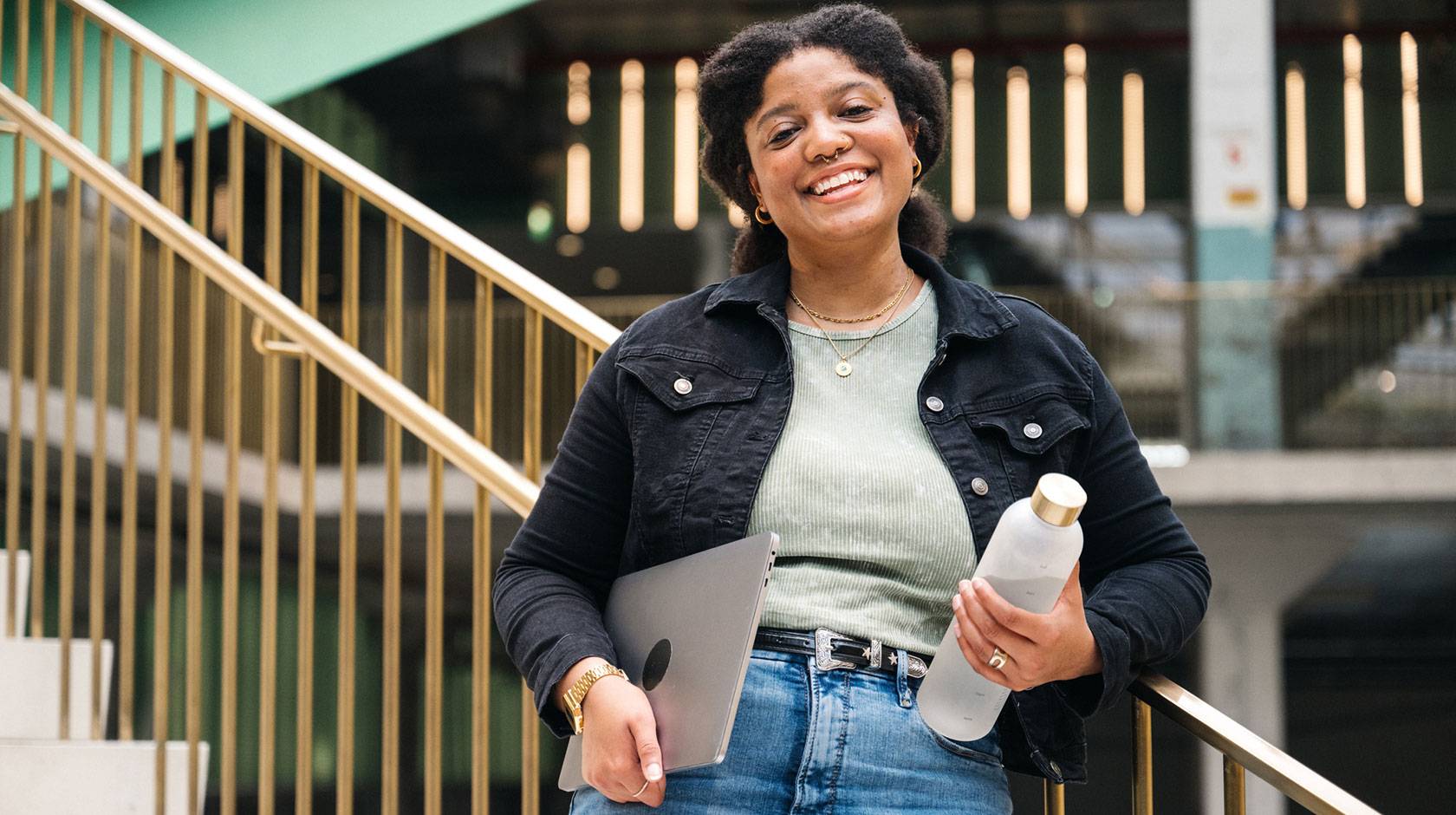
Sophia Garcia’s favorite thing about Cal football games is talking trash — literally. The UC Berkeley sophomore works on the Cal Zero Waste staff, which launched an effort to swap out single-use cups with sturdier, reusable ones at home football games this season. The cups could be returned to special collection bins, then washed and reused at the next game.
This football season, it was Garcia’s job to stand next to trash, composting and recycling cans on the concourses and help fans find the right bin for their reusable cups. “Once people got the hang of it, our return rates went up as the season went on,” she says. Throughout Cal’s seven-game homestand this fall, she helped keep thousands of plastic cups out of landfills.
Cal fans’ embrace of reusable cups is one of many changes the UC community has made in pursuit of its goal of eliminating certain single-use plastics, set by university leaders in 2020. For the first time, every campus and location is sharing its progress toward that goal as part of UC’s Annual Sustainability Report, which launched this week.
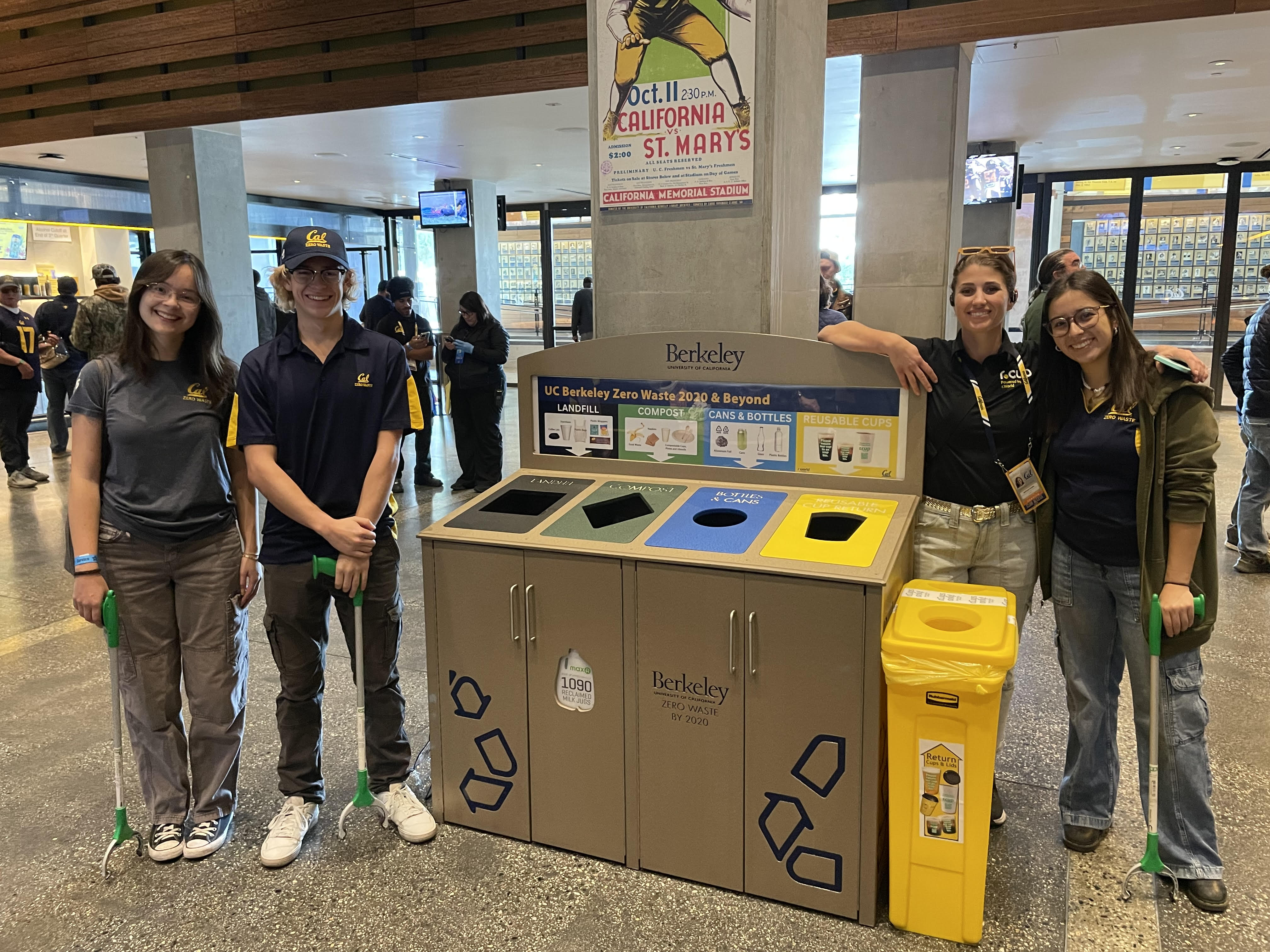
Resolving to eliminate single-use plastics is “a very ambitious goal, considering our society relies on plastic for almost everything, and it’s often cheaper than the alternatives,” says Agnes Martelet, who leads waste reduction strategies across the university as associate director of sustainability at the UC Office of the President. “We’re not there yet, but we’ve made incredible progress in a short time.”
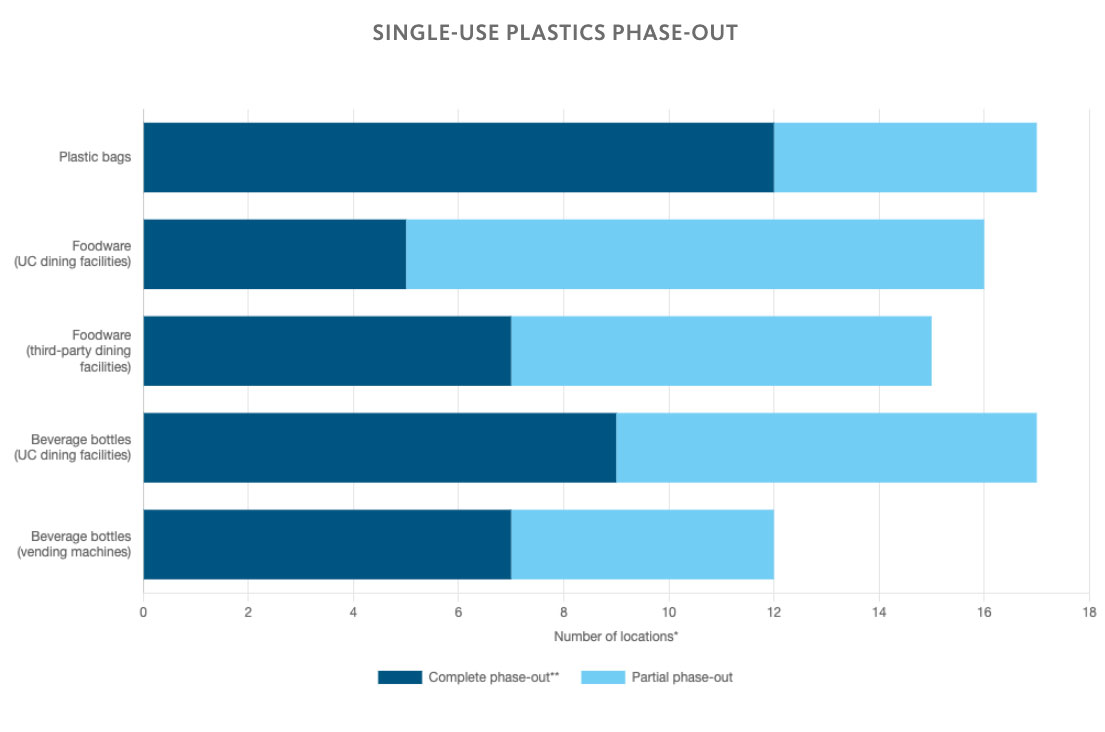
** Complete phase-out of single-use plastics may include exemptions where reasonable alternatives to plastic do not exist.
UC students pushed for single-use plastic bans — on campus and beyond
According to the UN, half of all plastics produced are designed to be used once and discarded, and less than 10 percent are recycled. “Nothing that we use for just a couple minutes should end up polluting our environment for hundreds of years,” says Jake Twomey, a third-year UC Santa Barbara student and chair of CALPIRG Students, a statewide network of 25,000 college students advocating for environmental and public health policy change.
Twomey says his CALPIRG predecessors and thousands more UC students played a huge role in advocating for the more stringent plastic policy that UC adopted in 2020. The organization gathered 12,000 signatures from UC students calling for a ban on single-use plastics, worked with student governments on every campus to pass resolutions in support of a ban and hosted beach clean-up events, and made their case to UC decision-makers. “Our role was to show leadership how big a priority this is for students,” Twomey says.
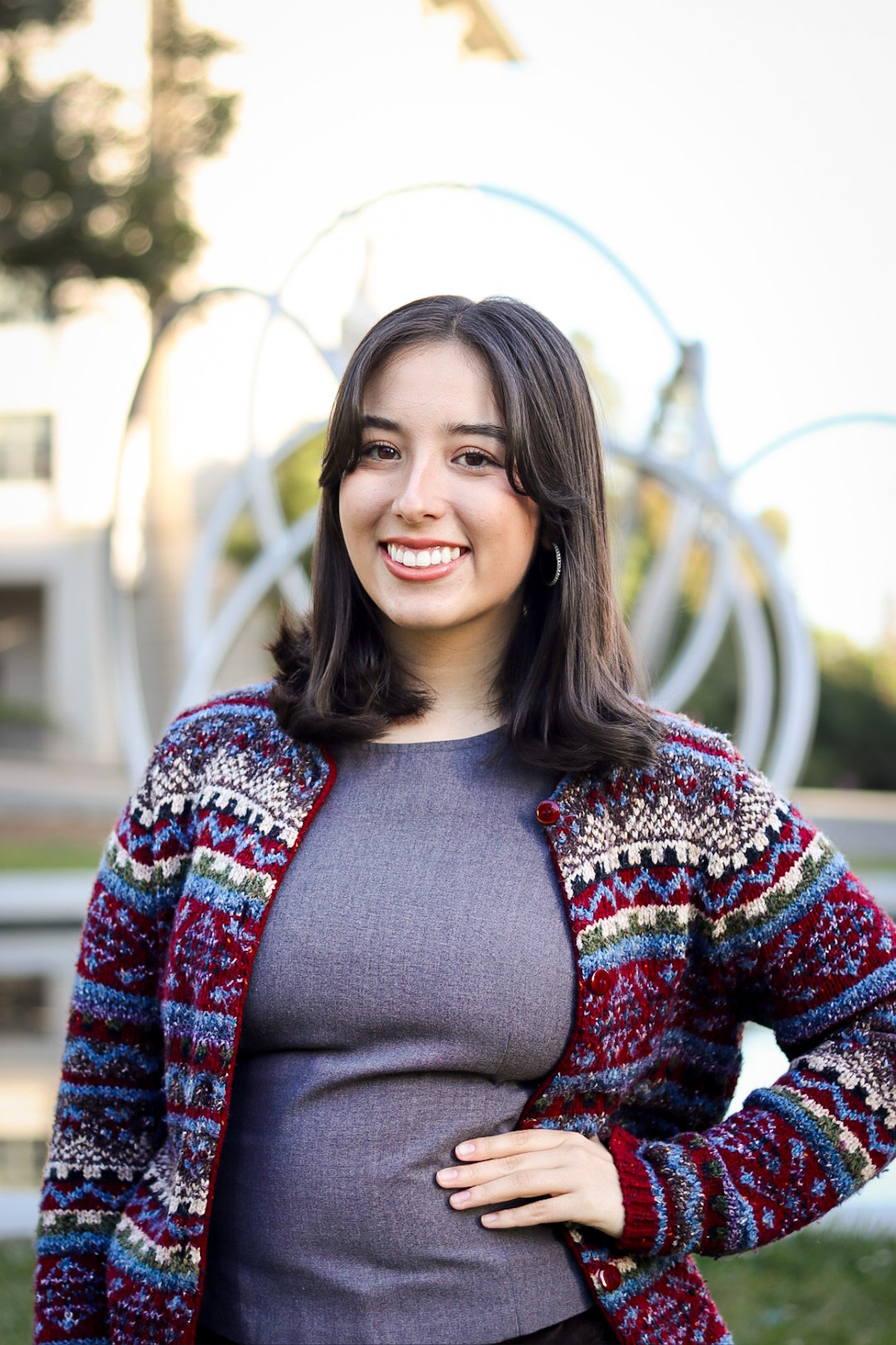
UC Berkeley sophomore Sophia Garcia, a member of the Cal Zero Waste team that's helping the campus meet single-use plastic elimination goals.
Once their push for a single-use plastics ban at UC succeeded, Twomey says CALPIRG Students carried that momentum to city and state government. They’ve since supported five successful local plastic bag bans, and in 2022, helped pass a statewide bill that shifts the responsibility for dealing with plastic waste from consumers to producers. And this year, CALPIRG Students backed a bill that closes what Twomey calls a “giant loophole” in a 10-year-old state law that banned flimsy plastic bags at grocery checkouts. When the bill goes into effect this year, stores will no longer be able to skirt that ban by offering heavier plastic bags and calling them reusable — which has actually caused plastic waste to increase since the initial ban passed.
“The State of California is out front on a lot of plastic legislation. That helps UC achieve our sustainability goals, and we aim to help the State by serving as a model for how to implement the State’s goals,” says Martelet with UC Office of the President.
What a single-use plastic phase-out looks like on campus
The single-use plastics ban is the latest addition to UC’s long-standing waste-reduction goals. By the end of this year, the university aims to cut per capita solid waste generation by 25 percent below 2015 levels, a target that half of campuses have already met, and is working toward a goal of diverting 90 percent of its waste from landfills through recycling or composting.
At UCLA, for instance, vending machines only carry beverages bottled in glass or aluminum as of late 2023. “The dining team worked hard with our vendors and sourcing to find non-plastic alternatives for all items offered in the vending machines,” says Jade Goegebuer, zero waste manager at UCLA and co-chair of the UC-wide zero waste working group. “They were instrumental to this being an area of success on campus, and show how important every single person and department is in complying with the single-use plastics policy.” The campus has also provided reusable water bottles to incoming students and added water bottle filling stations in most buildings and some outdoor locations.
Aluminum bottles are more sustainable than plastic, but food and beverage packaging that can be reused is more sustainable still, Martelet says. UC San Diego has replaced nearly all disposable takeout containers with reusable ones, equipped with a scannable label. When students place a takeout order through a campus dining hall, they’re charged a five-dollar deposit for each container, which gets refunded to their dining account when they return the containers to dedicated collection boxes distributed across campus. The containers are designed to withstand a thousand washes before breaking down, at which point they can be sent back to the manufacturer for recycling.
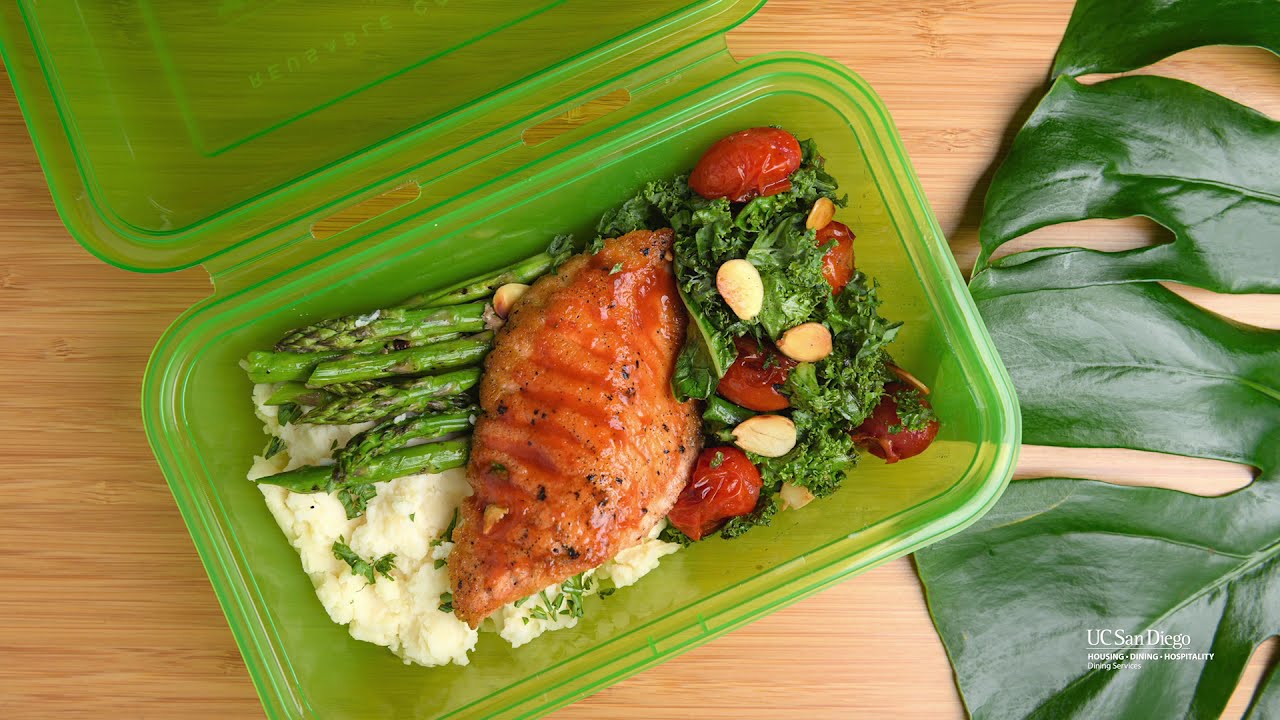
Since UC San Diego’s Triton2Go program launched in 2020, it has prevented 900,000 single-use plastic containers from entering local landfills. And since campus dining halls no longer have to buy a continual supply of disposable takeout containers, it took just a little over two years for the program to pay for itself. Now, it’s saving the university and its students $70,000 annually, says Maggie Grey, the procurement supervisor who helped create Triton2Go.
“A lot of the changes we’re making in the name of environmental sustainability actually end up being more economically sustainable as well,” Grey says.

UC Santa Barbara third-year student Jake Twomey, state board chair of CalPIRG Students.

